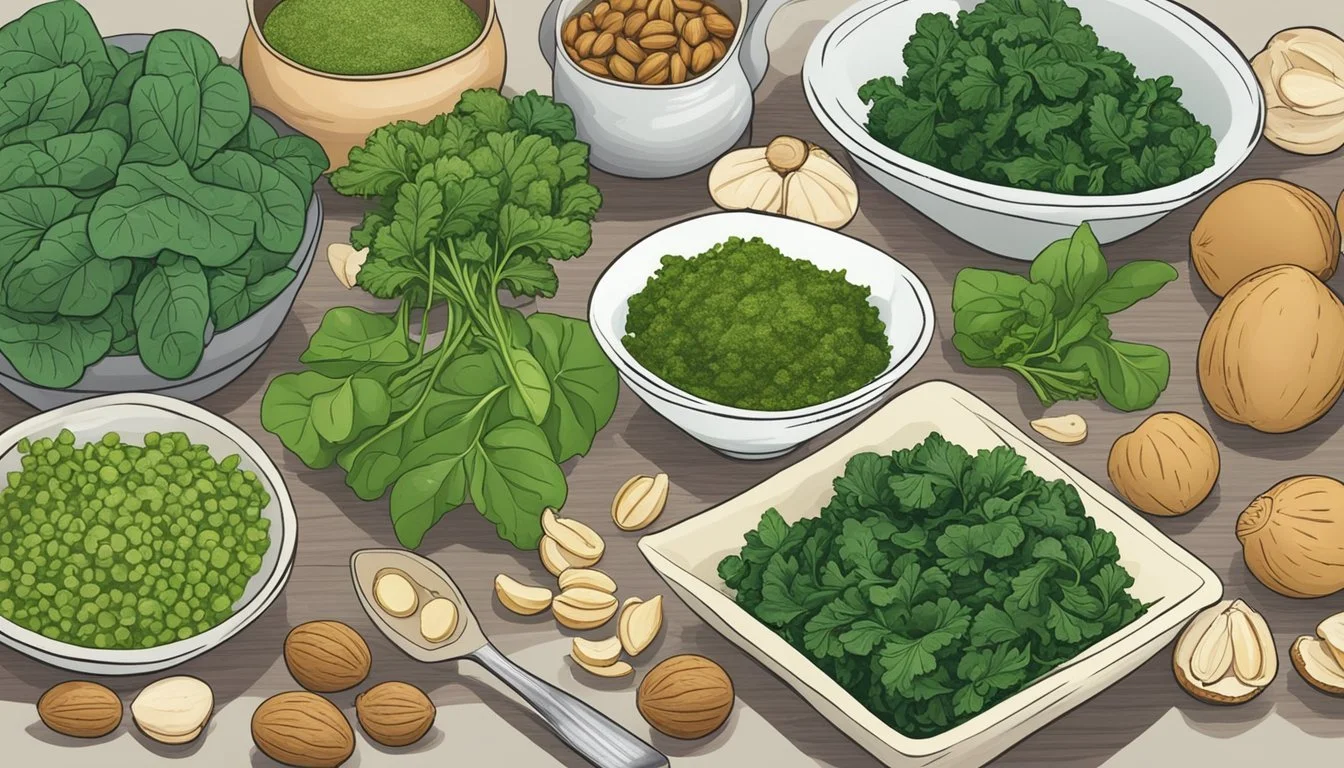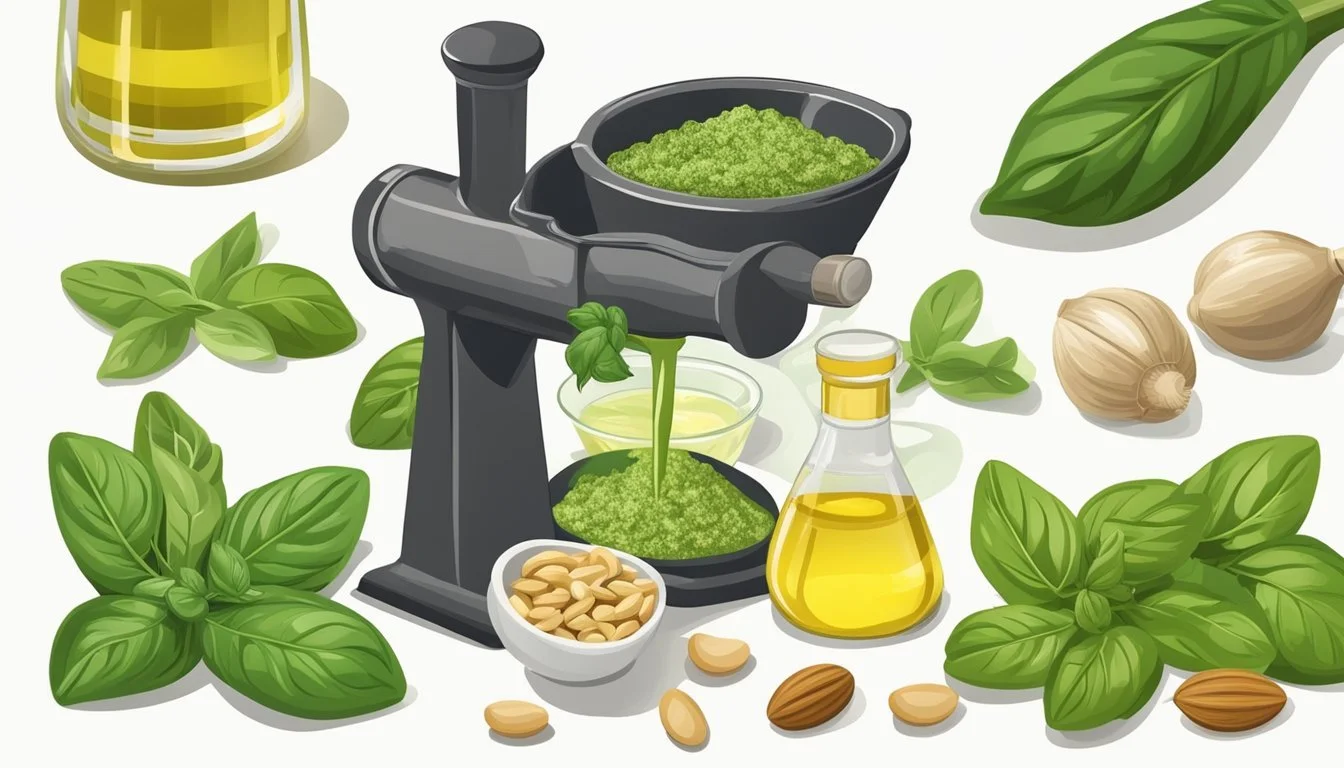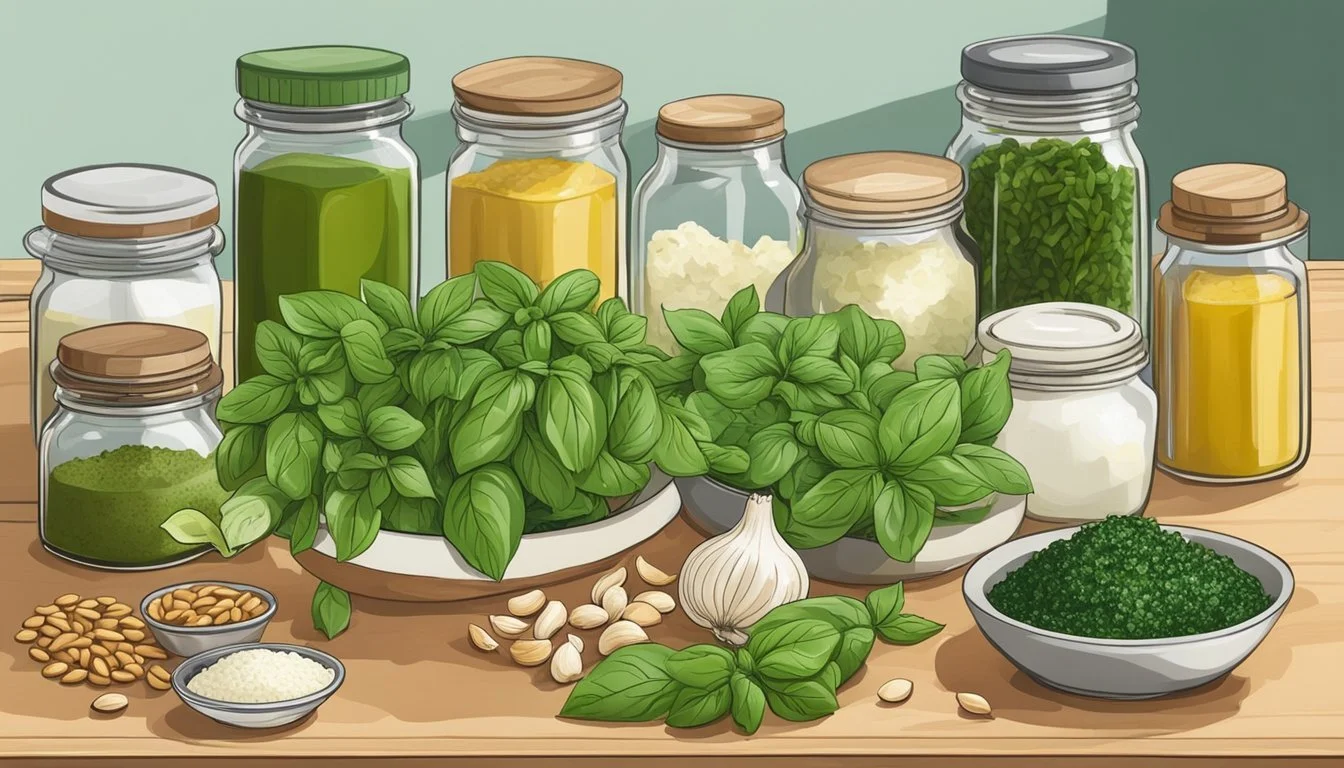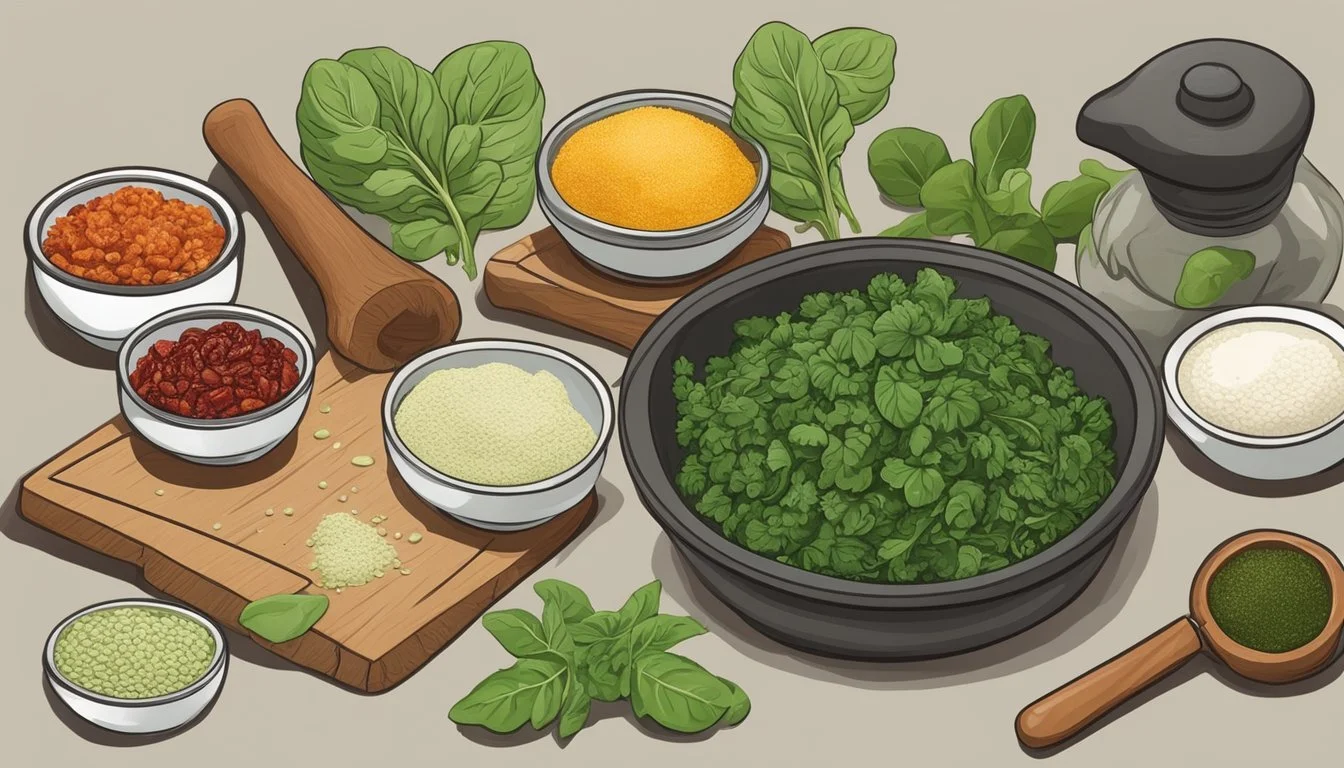Pesto Substitutes
Top Alternatives for Your Favorite Sauce
Pesto, the classic Italian sauce made primarily from basil, pine nuts, Parmesan cheese, garlic, and olive oil, has secured its place as a favorite among culinary aficionados worldwide. Its versatility allows it to be used in a myriad of dishes, from pasta to pizzas and sandwiches, imparting a rich, herby flavor that enhances the overall taste experience. While traditional pesto has its roots deeply planted in Genoese cuisine, variations have sprung up across the culinary spectrum to accommodate different diets, availability of ingredients, and personal taste preferences.
In pursuit of alternatives, chefs and home cooks have explored a range of substitutes for pesto's core ingredients. Pine nuts, a key component of the sauce, can be replaced with a variety of nuts and seeds such as almonds, walnuts, pistachios, or even pumpkin seeds, lending different textures and flavor profiles to the sauce. Similarly, basil can be swapped out for other leafy greens like spinach or kale, broadening the scope of pesto to fit various seasonal availabilities and nutritional desires.
Finding suitable substitutes for pesto or its ingredients does not merely serve to mimic the original; it's a creative endeavor to invite new combinations and flavors into one's cooking repertoire. Whether due to dietary restrictions, flavor experiments, or simply the need to work with what's readily available in the pantry, embracing alternative ingredients can yield sauces that are both delightful and distinct in their own right.
Understanding Pesto
Pesto is a sauce deeply rooted in Italian tradition, renowned for its unique flavor profile and versatility in the culinary world.
History and Origin of Pesto
Pesto originates from Genoa, the capital city of Liguria, Italy. It's a traditional sauce that dates back to the Roman times. However, the modern version of pesto, known as "pesto alla Genovese," was developed during the mid-19th century. The name 'pesto' is derived from the Italian word "pestare," which means to pound or crush, referring to the original method of preparation using a mortar and pestle.
Traditional Pesto Ingredients
The conventional pesto, or pesto alla Genovese, is a green sauce comprised of several key ingredients:
Basil leaves (Ocimum basilicum): The primary herb, imparting a fresh, peppery flavor.
Pine nuts: These nuts add a creamy texture and a subtle nutty taste.
Parmesan cheese (Parmigiano-Reggiano): A hard, aged cheese that infuses the sauce with a sharp, salty flavor.
Olive oil: A staple in Italian cooking, it serves as the liquid base of the sauce.
Garlic: Used for its pungent, spicy flavor, enhancing the overall taste of the sauce.
These ingredients are traditionally combined using a mortar and pestle to create a thick, emulsified sauce that maintains a slightly chunky texture.
The Culinary Role of Pesto
In Italian cooking, pesto sauce is a versatile condiment that has found its way into numerous dishes beyond its origins in Genoa. It's most commonly used as a complement to pasta, but it is also utilized as a flavorful addition to pizzas, sandwiches, and salads. The rich, pungent qualities of pesto make it an excellent ingredient to boost the flavor profile of a dish without overpowering other components.
Pesto Variations
Exploring pesto variations opens up a world of flavors and options catering to different regional tastes and dietary needs. This section delves into substitutes and adaptations that maintain the essence of pesto while introducing new ingredients.
Regional Pesto Varieties
In various parts of the world, traditional ingredients are substituted to create unique regional pesto types. For instance, in Argentina, chimichurri is a popular condiment similar to pesto, utilizing parsley, cilantro, and garlic, but without nuts or cheese. It’s a vivid blend that complements grilled meats and vegetables.
Nut-Free and Dairy-Free Alternatives
Nut allergies and dairy sensitivities require creative substitutes to maintain the pesto's distinctive texture and richness:
Nut-Free: Sunflower seeds, pumpkin seeds, or hemp seeds can replace traditional pine nuts to create a nut-free version, which can often mimic the original taste and texture closely.
Dairy-Free: To achieve a dairy-free pesto, one can omit cheese or use nutritional yeast as a flavor enhancer for the umami quality that cheese typically provides.
Herb-Based Pesto Variations
The classic basil in pesto can be replaced or supplemented with a variety of other greens and herbs:
Herbs: Parsley, cilantro, mint, or sage can be used for distinct flavors.
Greens: Spinach, kale, or arugula lend a different taste and increased nutritional value.
Oils: Substitutes like basil oil or parsley oil offer a quick way to infuse the essence of pesto in dishes.
Crafting the perfect pesto variation involves blending these ingredients in balance to create a complementary and satisfying accompaniment to many meals.
Pesto Ingredient Substitutes
Creating the perfect pesto blend comes down to personal preference and dietary needs. This section explores various substitutions for nuts and seeds, cheese, and oil and herbs, each offering a unique twist on the traditional pesto flavor profile.
Alternative Nuts and Seeds
In pesto, nuts provide a rich texture and flavor. If traditional pine nuts are unavailable or not preferred, there are several other nuts and seeds that can be used:
Cashews: Provide a creamy texture, making them a popular choice.
Pistachios: Offer a distinct flavor and a vibrant color.
Macadamia nuts: They're buttery and complement the basil's sweetness.
Pecans: Add a deeper, woodsy taste to the pesto.
Brazil nuts: Have a bold flavor that stands out in the mix.
Hazelnuts: Their nutty and slightly sweet profile pairs well with basil.
Pumpkin seeds: Are a nut-free option with a robust flavor.
Sesame seeds: Offer a subtle nuttiness, ideal for those with nut allergies.
Cheese Substitutes
Cheese adds depth and saltiness to pesto. However, for dairy-free or vegan alternatives, consider:
Nutritional yeast: A common vegan substitute that mimics the cheese flavor.
Pecorino Romano: A sharper, tangier alternative to Parmesan.
For those avoiding animal products, vegan Parmesan-style cheese can serve as a replacement.
Oil and Herb Substitutes
The choice of oil and herbs in pesto can significantly alter its flavor profile:
Olive oil: The traditional base of pesto, its fruity notes enhance the herb's freshness.
Sun-dried tomatoes: They can replace or complement the herbs for a different flavor twist.
When basil is not available, parsley or cilantro can serve as an herb substitute without compromising the bright, fresh taste of the pesto.
By experimenting with these substitutes, enthusiasts can adapt the pesto to their unique tastes or dietary restrictions while maintaining a delicious flavor profile.
Creating Pesto Substitutes
In crafting pesto substitutes, one must consider the elements that define traditional pesto: fresh herbs, nuts, cheese, and oil. Variations can cater to nut-free and dairy-free preferences while maintaining the essence of the original condiment. To ensure a rich flavor and suitable texture that complements foods like pasta, pizza, and bread, the right combination of ingredients and preparation methods, such as using a food processor, blender, or mortar and pestle, is vital.
Nut-Free Pesto Recipes
To create nut-free pesto, one can substitute classic pine nuts with seeds such as sunflower seeds which provide a similar texture and richness. Here is a simple recipe:
1 bunch of fresh basil leaves
2 cloves of garlic
1/2 cup sunflower seeds
1/2 cup extra virgin olive oil
1/2 cup grated Parmesan cheese
In a food processor, blend basil, garlic, and sunflower seeds until finely chopped. Gradually add olive oil until the mixture becomes a paste. Finally, incorporate the grated Parmesan to finish the pesto.
Dairy-Free Pesto Recipes
For dairy-free pesto, remove cheese from the recipe and consider an alternative such as nutritional yeast to replicate the umami flavor. The following ingredients can be blended for a dairy-free version:
1 bunch of fresh basil leaves
2 cloves of garlic
1/4 cup pine nuts or sunflower seeds
1/2 cup extra virgin olive oil
2 tablespoons nutritional yeast
Blend basil, garlic, and nuts until coarsely mixed. Stream in the olive oil while continuing to blend and stir in nutritional yeast in the end.
Using Pesto Substitutes in Dishes
Pesto substitutes can be applied across a range of dishes to add depth of flavor. For pasta, simply toss the prepared pesto with your favorite noodles. Pizza can be enhanced with a layer of pesto spread across the dough before topping. When preparing soup, a dollop of pesto can act as a flavorful garnish. Breads and lasagna can be brushed or layered with pesto for an aromatic kick.
As for sauces, a pesto substitute can be thinned with additional olive oil or water to create a vinaigrette or used as a marinade for meats and vegetables. Its versatility extends beyond just Italian cuisine, as pesto substitutes can complement a broad spectrum of dishes.
Pesto Substitute Considerations
When considering alternatives to traditional pesto, one must evaluate how well substitutes mimic its distinctive flavor profile and texture, assess their health benefits and nutritional content, and consider economic and availability factors to make an informed choice.
Taste and Texture
Pesto's unique taste is a blend of savory, herbaceous, and slight lemon notes, usually achieved by combining basil, garlic, pine nuts, olive oil, and grated Parmesan. Substitutes should aim to match this complexity. Basil oil can be a quick fix, providing a similar texture and flavor with just basil and olive oil. To replace the creamy mouthfeel, one might consider avocado sauce, which offers a fresh and somewhat buttery taste, lacking the nuttiness but giving a comparable texture.
Health and Nutritional Factors
Traditional pesto offers proteins, antioxidants, and various nutritional benefits. Alternatives should likewise bring nutritional value to the table. Chimichurri, made with cilantro, parsley, and green onions, brings in antioxidants but has a different flavor profile lacking the basil and Parmesan. On the health front, avocado sauce is rich in healthy fats and is a good substitute for those seeking a nutritionally-dense option. It's essential to consider the sodium content; a substitute with less salt might be more beneficial for those monitoring their salt intake.
Economic and Availability Factors
The price of pine nuts and fresh basil can make traditional pesto a pricier option. Substitutes using more affordable seeds such as sunflower seeds provide a similar texture and are often more budget-friendly. Basil Vinaigrette, using common ingredients like red wine vinegar and garlic, offers a lighter alternative that is both accessible and cost-effective. Availability can also dictate choices; when fresh herbs are out of season, dried herbs or alternative greens might serve as convenient and economical substitutes.
Recipes and Usage Tips
In this section, readers will discover recipes for crafting pesto substitutes at home and learn how to seamlessly incorporate these alternatives into their favorite dishes, maintaining flavor and appeal.
Homemade Pesto Substitute Recipes
For those who do not have access to traditional pesto ingredients or simply want to explore new flavors, homemade pesto substitutes can be a delight. They can easily prepare a Basil Oil by finely chopping basil leaves and combining them with extra virgin olive oil to form a paste-like consistency.
Alternatively, they might opt for a Basil Vinaigrette by whisking together the following ingredients:
Olive oil
A small amount of red wine vinegar
Minced garlic
Finely chopped fresh basil leaves
A food processor or blender can mix these substitute sauces to the desired consistency.
Incorporating Substitutes in Traditional Recipes
When using substitutes in traditional pesto-centric recipes, one should consider the flavor profiles of the dishes and how the alternatives will blend in. A sauce like Avocado Sauce, rich and creamy, often requires just avocado, lime juice, and seasonings blended until smooth. This sauce pairs exceptionally well with pasta dishes and can easily replace traditional pesto without compromising the dish's integrity.
One can also use Mint and Pistachio Pesto, a more unconventional but flavorful option. They can spread it onto meats such as lamb chops or mix it into a yogurt dip for a fresh twist. Similarly, Chimichurri, commonly made with cilantro, parsley, and green onions, can bring a vibrant and zesty taste to foods traditionally served with pesto sauce.
Conclusion
In the realm of Italian cooking, pesto stands out as a beloved sauce characterized by its vibrant color and rich flavor. However, in instances where pesto is unavailable or unsuitable due to dietary preferences, a selection of substitutes provide ample alternatives without compromising taste.
Avocado sauce, with its creamy texture, emerges as a healthful option, laden with beneficial fats. It complements pasta dishes exquisitely and can be adjusted for consistency as needed. Another inventive replacement is basil vinaigrette, which retains the basil undertone pivotal to pesto's identity.
Herb oils prove to be versatile, as they can harness the essence of various herbs beyond basil, such as parsley, to infuse dishes with a pesto-like character. Chimichurri, albeit distinct with its use of cilantro and parsley, offers a zesty punch and mirrors pesto's garlic and oil foundation.
For those focused on nutritional merits, alternative nuts such as sunflower seeds serve as an excellent stand-in for pine nuts, ensuring a similar textural experience alongside a profile abundant in fiber and protein.
When one considers alternatives to pesto, the possibility of experimenting with different ingredients not only caters to a range of tastes and dietary needs but also enriches the culinary process. These substitutes not only embrace the essence of Italian cuisine but also add their unique flair without straying from the nutritional benefits that pesto provides.





